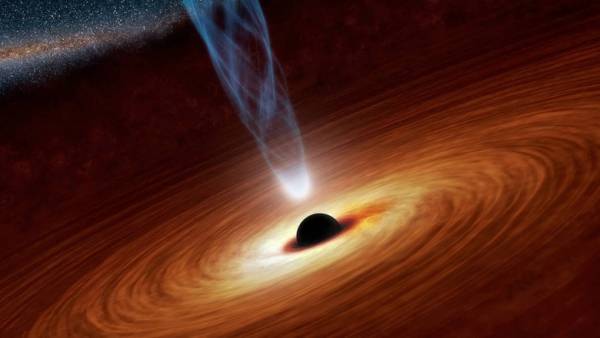Supermassive black holes have overtaken your galaxy in speed of growth
The largest black holes in the Universe are growing faster than the galaxies in which they reside, report astronomers in papers published in the journal Monthly Notices of the Royal Astronomical Society.

This discovery contradicts the prevailing theory that the growth of these objects must be synchronous, but to explain this contradiction, the researchers can’t yet.
The center of almost all spiral galaxies are supermassive black holes. This is a gigantic objects, whose mass can be up to 10 billion solar masses.
Numerous observations show that the rate of growth of supermassive black holes is usually approximately equal to the rate of formation of new stars in galaxies. But now two teams of astronomers found evidence that the biggest galaxies this pattern can be broken.
The first group under the leadership of Guan Yan from the University of Pennsylvania in their work used data from the x-ray Observatory “Chandra” telescope “Hubble” and several reviews. The astronomers analyzed the growth rate of galaxies separated from Earth by distances ranging from 4.3 to 12.2 billion light-years. In the end, they found that supermassive black holes in the biggest galaxies are growing surprisingly quickly. For galaxies, containing about 100 billion stars of solar mass, the ratio of the growth rates were approximately 10 times higher than for galaxies with billions of stars of 10 solar masses.
The same pattern is found another group of astronomers under the leadership of Mary Mescua from the Institute of space Sciences in Spain. Using radio interferometers Very Large Array and Very Long Baseline Array and other tools the researchers studied 72 galaxy. All of them were in the centers of galaxy clusters, distant from the Earth not more than 3.5 billion light-years, and was noted for the brightness and massiveness.
Astronomers have estimated the masses of black holes in these galaxies using the well-known formula that connects the size of a black hole emanating from its surroundings x-ray and radio emission. Method gave a value 10 times more than that which was obtained on the basis of common dependencies. Almost half of the black holes of the sample had a mass of at least 10 billion times bigger than the Sun. Such objects are called ultramassive.
Thus the answer to the question about why the largest galaxies the black holes are growing faster yet.
Guan Yan suggests that in massive galaxies the black holes can more effectively absorb the gas. Another group of scientists explain the discrepancy between the fact that black holes can form before galaxies.
Recently astronomers first managed to obtain high quality of the dense gas and dust ring surrounding the active supermassive black hole. The existence of such structures had been predicted decades ago, but only now scientists were able so clearly to see them.